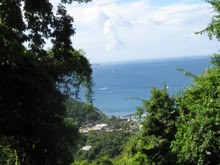 |
| The smaller of the two ponds |
One of my favorite places to go for bird watch is a relatively new development on the southside of the
city. There is a natural area there, right next to Walmart, where there are two ponds, a small forest
and some farmers fields, complete with marshy areas. I haven't seen many hawks this year, and I knew
I was virtually guaranteed to see some hawks hunting there.
I really needed some alone time as well, away from people, and this location was perfect. I left earlier than I usually do, just to ensure that I would have the place to myself, and I wasn't disappointed. I was greeted almost instantly by a pair of Swainson's hawks riding the thermals, but ducked into Walmart real quick to grab some breakfast at the Timmy's inside.
When I emerged it wasn't to see the hawks. Instead I was greeted by this lone, White Pelican. What a fantastic surprise. I nearly dumped my coffee on the pavement, as I scrambled to get my camera set and focused. As I was snapping the photos, questions were popping into my head in rapid succession. Why is it alone? What's it doing here? Are there more? If so, where? So as I was taking photos I was trying to get to the ponds at the same time. But hurried glances produced no more than this lone bird.
 |
| White Pelican |
 |
| White Pelican circling above |
I watched with delight, as he circled above me for a few more minutes, trying to catch an upward thermal and then he was gone off in a direction I couldn't follow, leaving me somewhat deflated. I continued on to the smaller of the two ponds, where a bench was waiting and settled in for a bit of absolutely nothing.
 |
| My favorite flower |
Right next to the bench is a silvery bush with tiny little yellow blooms that smell divine. I don't know what it is called, but I look forward to taking in it's scent every year. These little blooms don't last long, just a few days, but I never forget their smell. I sat and relaxed, taking in the scent of the blooms, listening to the spray of the water fountain in the pond and soaking up the sun.
 |
| Swainson's Hawk |
 |
| Red-necked Grebe |
 |
| Swallow-tail |
Before long I noticed a Red-necked Grebe on the pond, just drifting, a Swainson's Hawk above, and the song of a Clay-colored Sparrow, and then this gorgeous Swallow-tail landed on a bush a just few feet away. That's what got me moving again about an hour later. I took my time trying to locate the Clay-colored sparrow, but although I could hear more than one, they were no-where to be seen. However, I did come across these Canada Geese at the far end of the pond.
 |
| Canada Goose and goslings |
 |
| Which one is the youngest |
I don't know how many goslings there are, but they were closely guarded by four adult geese. Who hissed at me when I got too close, but once they got used to my presence, they just ignored me. If you look closely you will see that the goslings are of several age groups. I left them wondering how many families of Geese, the goslings actually belonged to.
My slow wandering eventually took me across the farmers field to the marshy area on the other side.
 |
| Small marsh |
 |
| Red-tailed hawk |
As I was crossing the field I spotted a Red-tailed hawk and saw a couple of Killdeer off in the distance. When I reached the marshy area, the first thing that I noticed was that the frogs were silent, unlike last time I was here. It was also much dryer. I guess the rains we've had in the past few days have not been enough to keep it from drying out. There were some deer tracks in the dry mud, as well as the tracks of some very large birds, and, by my guess, a coyote.
Clay-colored sparrows were singing everywhere but there was also one other odd sound, not a song, but definitely a bird, that kept coming to my ears, and then a bird suddenly landed on the ground about twenty feet in front of me, that I didn't recognize.
 |
| Meadowlark |
 |
| A meadowlark |
It turns out to be my very first Meadowlark. As is typical when I spot a new bird, I was dancing inside with joy, while I took as many photos as I could and attempted to move closer an inch at a time, over what seemed like an hour. Just when I was getting close enough to make out some real detail, a Killdeer performed a very noisy flyby and the Meadowlark took off. Oh well, if I see it once I will see it again. Although I really wish I had gotten close enough to see if it is an Eastern or Western Meadowlark.
I returned to the ponds and spent the next couple of hours leisurely exploring the forested area and the edge of the fields. When I returned to the bench by the small pond, I startled a young muskrat back into the water. Another wonderful surprise, the last one for the day.
 |
| Muskrat |
I don't know what this one was doing up and about during the day time, since they are nocturnal and it was almost noon by this time, but I'm very glad he was. Notice how he uses his tail like a rudder. He looks fairly big in the water, but was small on land from the quick flash of him that I saw, a little smaller than a guinea pig.
Enjoy,
Susan
























































